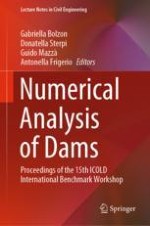This book gathers contributions from the 15th ICOLD Benchmark Workshop on Numerical Analysis of Dams. The workshop provided an opportunity for engineers, researchers and operators to present and exchange their experiences and the latest advances in numerical modelling in the context of the design, performance and monitoring of dams. Covering various aspects of computer analysis tools and safety assessment criteria, and their development over recent decades, the book is a valuable reference resource for those in the engineering community involved in the safety, planning, design, construction, operation and maintenance of dams.
